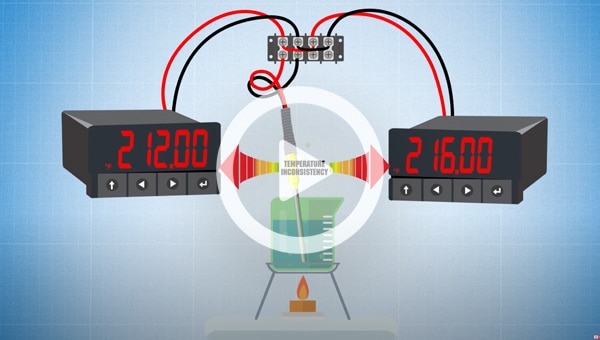If you need to split the thermocouple’s signal so that its output is displayed on or recorded by multiple devices, the application’s setup will be more complicated. If you simply wire two receivers in parallel to a single thermocouple, the resulting temperature readings may be inaccurate. This is due to the high impedance in the wiring, which some meters cannot tolerate.
In this article, we’ll explain two methods for splitting your thermocouple signal. You can use these with any type of instrumentation.
Method #1: Use a dual thermocouple
One way to achieve accurate readouts on two instruments receiving the same thermocouple signal is to replace the single thermocouple with a dual thermocouple.
In a dual thermocouple two junctions are measuring the same point. Each junction’s signal will be wired to its own separate receiving device.
Method #2: Employ a thermocouple transmitter
A thermocouple transmitter converts the thermocouple’s output into a voltage or current signal. This signal can be sent to multiple instruments without creating impedance or related problems.
This second method requires a small amount of extra wire as well as additional programming effort. You’ll need to ensure that each device is scaled properly to match what the transmitter is sending. This method can support any number of receiving instruments or devices, including ones that are monitoring temperatures at a remote location.
If you have additional questions on how to wire thermocouples into your applications, contact us today. A member of our team will be happy to help.


